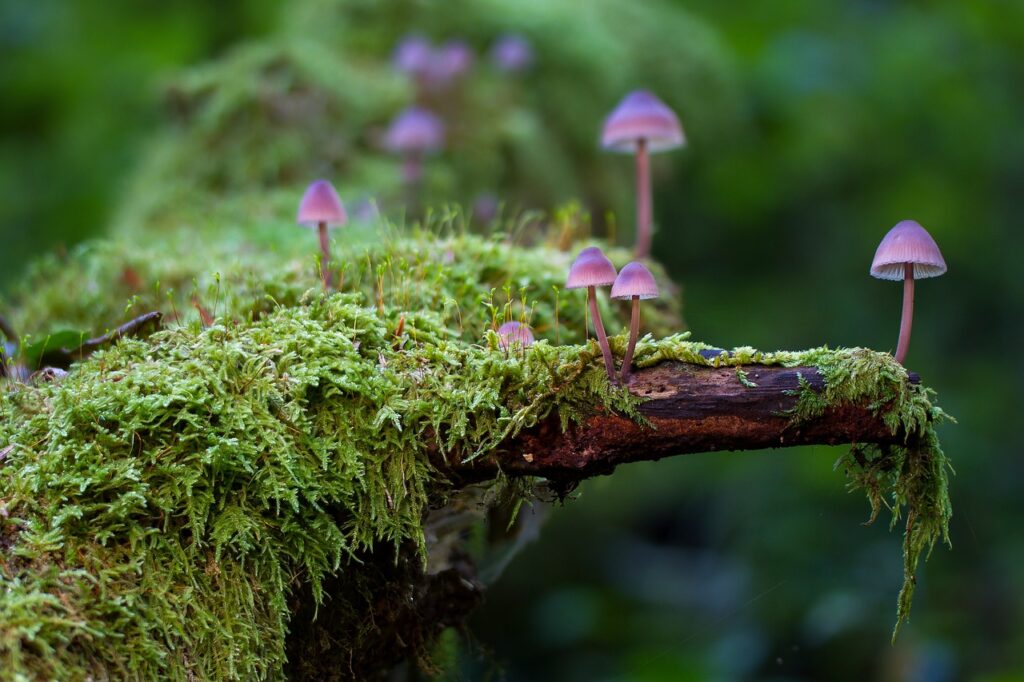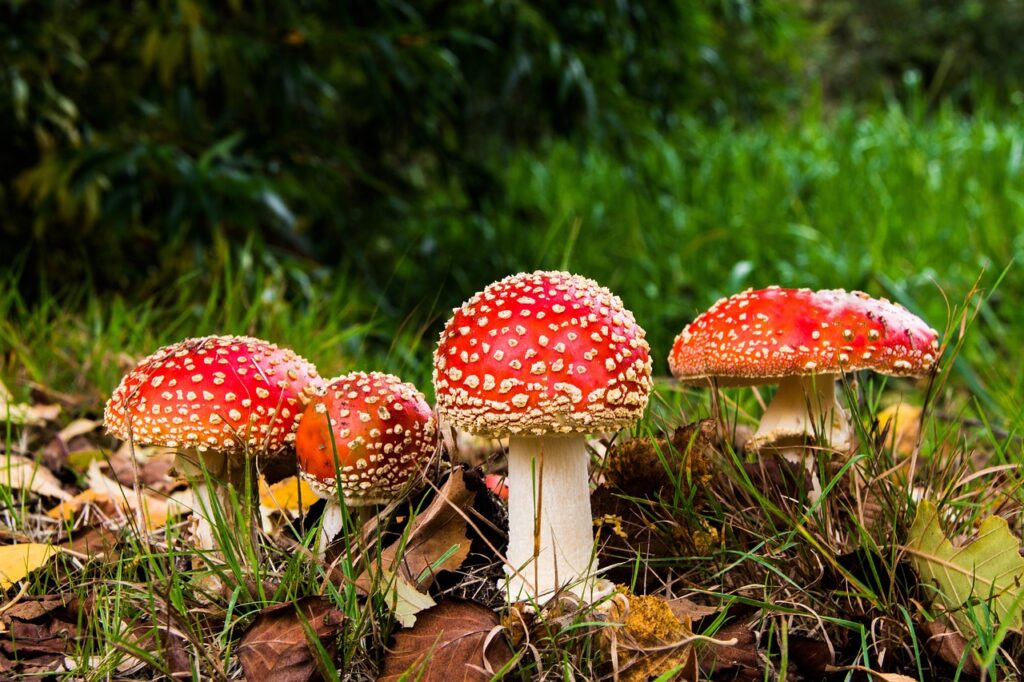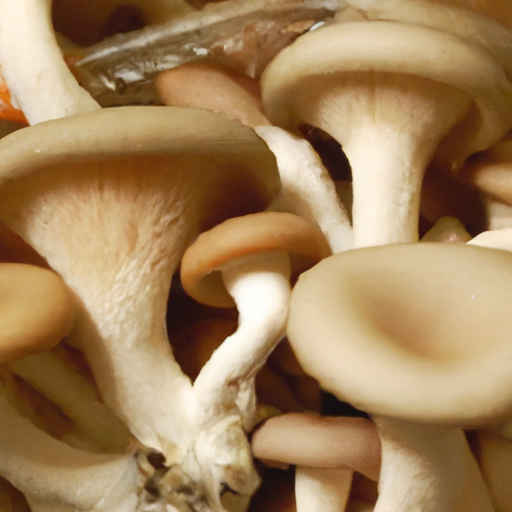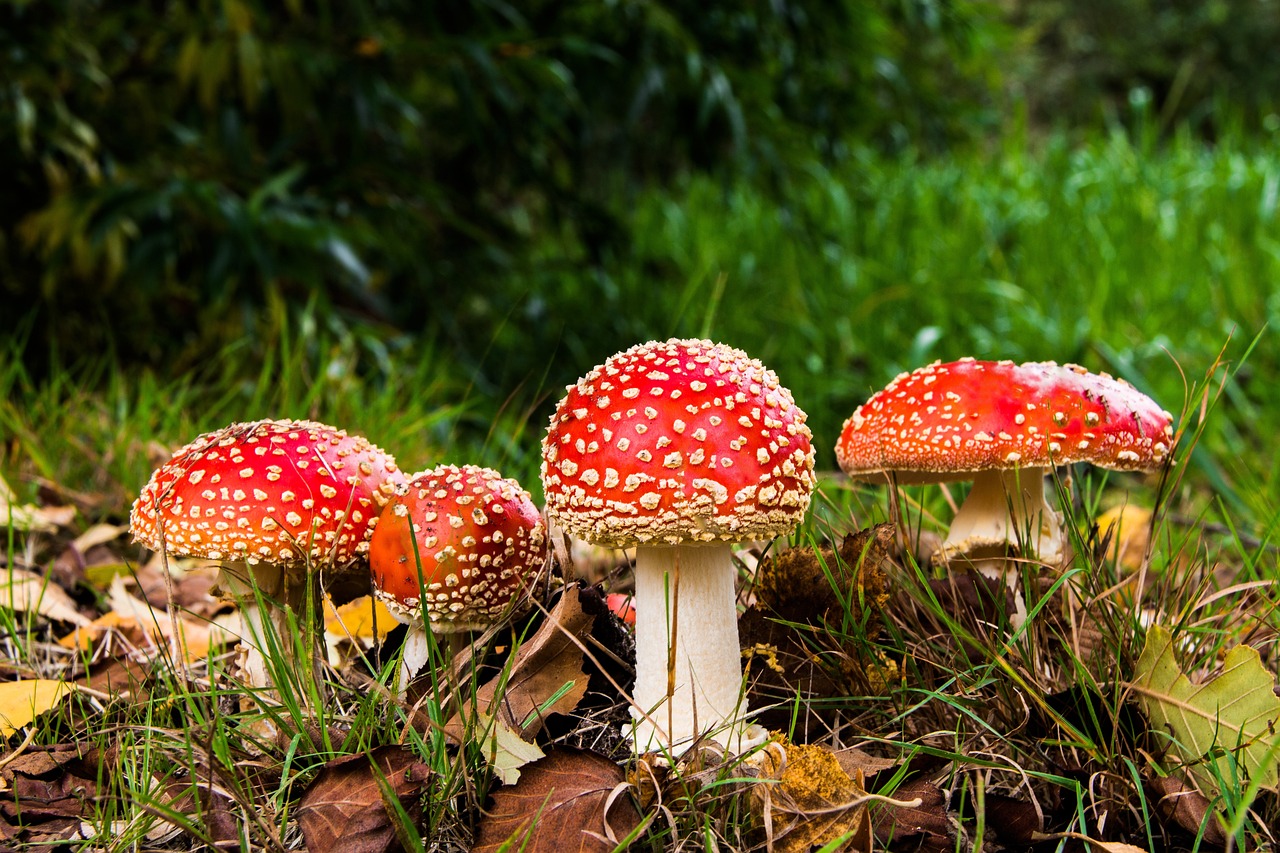If you are a mushroom enthusiast or simply looking to extend the lifespan of your mushrooms, you may have wondered if it is possible to store them for long-term use. The answer is yes! This article will explore the different methods and tips for effectively storing mushrooms to ensure their quality and flavor remain intact for as long as possible. So, if you’ve ever pondered about the longevity of your mushroom supply, read on to discover the secrets of successful long-term mushroom storage.

What to Consider Before Storing Mushrooms
Before you start storing mushrooms for long-term use, there are a few important factors to consider. First, determine the types of mushrooms that are suitable for long-term storage. Certain varieties, like shiitake and porcini, have a better texture and flavor when preserved. Other mushrooms, such as enoki and oyster, are more delicate and may not retain their quality after extended storage.
Next, consider the freshness and quality of the mushrooms. It is crucial to use fresh mushrooms that are in their prime. Look for firm caps, clean surfaces, and minimal signs of damage or decay. Avoid using mushrooms that are slimy, discolored, or have a strong odor, as these are indications of spoilage.
Lastly, proper preparation is key to ensure your stored mushrooms remain safe and delicious. Clean the mushrooms thoroughly by gently brushing off any dirt or debris. Avoid washing them, as mushrooms can absorb moisture and become mushy. Trim any tough stems or damaged areas before proceeding with your chosen method of storage.
Types of Mushrooms Suitable for Long-Term Storage
When it comes to long-term mushroom storage, not all varieties are created equal. Some mushrooms hold up better than others, maintaining their texture and flavor even after an extended period. Two popular options for long-term storage are shiitake and porcini mushrooms.
Shiitake mushrooms have a robust flavor and meaty texture that lends itself well to drying or freezing. They develop an intense umami taste when dried, making them a perfect addition to stews, soups, and stir-fries. Porcini mushrooms, with their rich, earthy flavor, are also highly suitable for long-term storage. They can be dried, powdered, or frozen, adding a delightful depth to risottos, sauces, and pasta dishes.
While shiitake and porcini mushrooms are excellent choices, you can also try preserving other types, such as morel or chanterelle mushrooms. However, keep in mind that their delicate nature may require extra care and attention during storage.

Freshness and Quality of Mushrooms
When it comes to storing mushrooms, starting with fresh and high-quality specimens is essential. Fresh mushrooms have a firm texture, a mild smell, and a vibrant appearance. Look for caps that are intact, without any bruises or discoloration. The stems should be crisp, not slimy or mushy.
It is best to choose mushrooms that are in their prime, as mushrooms that have started to deteriorate will not hold up well during storage. If you’re picking mushrooms from the wild or purchasing them, make sure to inspect them closely. For optimal results, use the mushrooms as soon as possible after harvest or purchase.

Proper Mushroom Preparation
Properly preparing mushrooms before storage is crucial to maintain their quality and flavor. Start by giving them a gentle cleaning. Avoid washing mushrooms, as they are quite absorbent and can become waterlogged. Instead, use a soft brush or a damp cloth to remove any dirt or debris. This method ensures that the mushrooms stay dry and retain their natural texture.
After cleaning, trim the mushrooms to remove any tough stems or damaged areas. If you’re planning to freeze the mushrooms, you may want to slice or dice them to make it easier to use them in your future recipes. For drying, consider leaving smaller mushrooms whole or cutting larger ones into uniform slices to ensure even drying.
Remember, the goal is to prepare the mushrooms in a way that optimizes their flavor and texture, while also making it easier to use them in your favorite dishes down the line.

Methods of Storing Mushrooms
Now that you have selected your mushrooms, assessed their freshness, and prepared them properly, it’s time to explore various methods of storing mushrooms for the long term. Depending on your preferences and the intended use of the mushrooms, you can choose from several preservation techniques.
Drying Mushrooms
Drying mushrooms is a popular method of preservation, as it intensifies their flavors and allows for convenient long-term storage. To dry mushrooms, you can use a food dehydrator, an oven, or simply air dry them. Begin by slicing the mushrooms into uniform pieces to ensure even drying. Spread the slices on a tray or a drying rack, making sure they are not touching each other.
If using a dehydrator or oven, set the temperature to low or around 115°F (46°C) and allow the mushrooms to dry until they become crisp and brittle. This process may take several hours, depending on the size and moisture content of the mushrooms. For air drying, place the mushroom slices in a well-ventilated area, such as a wire mesh or a drying screen. Let them dry naturally for several days, flipping them occasionally to ensure thorough drying.
Once fully dried, store the mushrooms in an airtight container, preferably glass jars or vacuum-sealed bags. Keep them in a cool, dark place to maintain their flavor and quality. Properly dried mushrooms can be stored for up to a year, retaining their distinct taste and aroma.
Freezing Mushrooms
Freezing mushrooms is another excellent method for long-term storage while preserving their flavor and texture. The freezing process halts the enzymatic activity in the mushrooms, preventing further deterioration. Before freezing, it is recommended to blanch the mushrooms briefly to minimize the loss of quality.
To blanch mushrooms, bring a pot of water to a boil and add the mushrooms for a quick dip, around 2-3 minutes. Blanching helps preserve the color and texture while killing off any potential bacteria or contaminants. After blanching, transfer the mushrooms to an ice bath to rapidly cool them down and halt the cooking process.
Once cooled, arrange the mushrooms on a baking sheet lined with parchment paper, ensuring they are spaced out to prevent sticking. Place the baking sheet in the freezer to flash freeze the mushrooms. After freezing, you can transfer them to airtight containers or freezer bags, removing as much air as possible for optimal storage.
Frozen mushrooms can maintain their quality for up to 12 months. They are a convenient option for dishes like soups, stews, casseroles, and stir-fries, as they can be used directly from the freezer without thawing.
Canning Mushrooms
Canning mushrooms is a technique that requires proper equipment and knowledge to ensure safety and quality. It involves packing mushrooms into sterilized jars, heat processing them, and creating a vacuum seal to prevent spoilage. If you’re new to canning, it is recommended to follow a reliable canning recipe or consult a canning expert to ensure proper procedures are followed.
To can mushrooms, clean and prepare them as usual, ensuring they are free from any dirt or debris. Slice or quarter the mushrooms, depending on your preference. In sterilized jars, pack the mushrooms with a bit of liquid, such as water or vegetable broth, leaving proper headspace. Wipe the jar rims clean and seal them with canning lids and rings.
Process the jars in a pressure canner according to the recommended time and pressure for your altitude and mushroom type. Once the canning process is complete, allow the jars to cool naturally and check for proper seals. Store the properly canned mushrooms in a cool, dark place for up to a year.
Pickling Mushrooms
Pickling mushrooms is a delightful way to store them while infusing them with tangy flavors. Pickled mushrooms can serve as a versatile condiment, a savory snack, or a vibrant addition to salads and sandwiches. The pickling process involves soaking the mushrooms in a vinegar-based brine and then canning them to ensure preservation.
To pickle mushrooms, start by cleaning and trimming them, removing any tough stems. In a pot, combine equal parts water and vinegar, along with your desired seasonings, such as salt, sugar, garlic, and spices. Bring the brine to a boil, then add the mushrooms and simmer for a few minutes until they soften slightly.
Using sterilized jars, pack the mushrooms tightly and cover them with the hot brine, leaving sufficient headspace. Wipe the jar rims, seal them with canning lids and rings, and process the jars in a boiling water bath for the recommended time. After processing, allow the pickled mushrooms to cool and rest for a few weeks to develop their flavors. Properly sealed jars can be stored for up to a year.
Preserving Mushrooms in Oil
Preserving mushrooms in oil offers a unique method of storing while infusing them with rich flavors. This technique requires the use of acidic ingredients like lemon juice and vinegar, which help prevent the growth of bacteria and extend storage life. However, it is crucial to note that storing mushrooms in oil carries a risk of botulism, a potentially serious foodborne illness. Therefore, it is important to follow proper food safety guidelines and take extra precautions.
To preserve mushrooms in oil, start by cleaning and slicing them, just as you would for other methods. In a pan, sauté the mushrooms in a bit of oil until they are cooked through. Once cooked, remove them from the heat and let them cool. In a sterilized jar, layer the mushrooms with herbs and spices of your choice.
Prepare the preserving liquid by combining equal parts vinegar and lemon juice with a bit of salt. Heat the liquid until it reaches a simmer, then carefully pour it over the mushrooms to cover them completely. Allow the jars to cool and place them in the refrigerator, where the mushrooms will stay submerged in the liquid.
Preserved mushrooms in oil should be consumed within a few weeks and stored in the refrigerator. Be mindful to use the appropriate amount of acid and refrigeration to prevent any potential risks associated with botulism.

Best Practices for Storing Mushrooms
Now that you’ve selected your mushrooms, prepared them properly, and chosen a storage method, it’s crucial to follow these best practices to ensure optimal storage conditions and to maintain the quality of your stored mushrooms.
Packaging and Container Selection
Selecting the right packaging and containers is key to preserving mushrooms effectively. For drying or freezing, airtight glass jars or vacuum-sealed bags are excellent choices, as they prevent moisture and air from reaching the mushrooms. Label the containers with the date of storage to track their freshness.
If you’re canning or pickling mushrooms, use jars specifically designed for canning, ensuring they are sterilized before use. Properly sterilized jars, along with the sealing lids and rings, create an airtight seal and prolong shelf life.
When preserving mushrooms in oil, use clean and airtight glass jars that can be sealed tightly. Remember to refrigerate these jars promptly and monitor the mushrooms for any signs of spoilage.
Storage Conditions
Storage conditions play a vital role in maintaining the quality and safety of your stored mushrooms. For dried mushrooms, store them in a cool, dark place away from direct sunlight or heat sources, as light and heat can degrade their flavor.
Frozen mushrooms should be stored in the freezer at a consistent temperature of 0°F (-18°C) or below. Avoid frequent temperature fluctuations by placing the containers in the coldest part of your freezer, away from the door and other items that may cause temperature variations.
Canned and pickled mushrooms should be stored in a cool, dark pantry or cupboard, away from excessive heat or sunlight. Ensure the jars are properly sealed and do periodic checks for any signs of spoilage, such as bulging lids or unusual odors.
If you opt to preserve mushrooms in oil, always refrigerate the jars promptly after preparing them. Keep the jars in the refrigerator and use the mushrooms within a few weeks to minimize the risk of foodborne illness.
Duration of Mushroom Storage
The duration of mushroom storage varies depending on the preservation method and storage conditions. Dried mushrooms, when stored properly, can last up to a year without significant loss of quality. Frozen mushrooms can maintain their quality for up to 12 months, while canned and pickled mushrooms can last for up to a year when correctly sealed and stored.
It’s important to note that while some methods allow for longer storage, mushrooms are at their best quality when consumed within the first few months. Taste and texture may gradually deteriorate over time, so it’s advisable to rotate your stock regularly to enjoy the freshest mushrooms.
Signs of Spoilage
Regularly checking your stored mushrooms and being aware of signs of spoilage is crucial to prevent any adverse effects on your health. Signs of spoilage include a foul odor, slimy or discolored appearance, mold growth, or unusual texture. If you notice any of these signs, discard the mushrooms immediately to avoid foodborne illnesses.
Additionally, if you have preserved mushrooms in oil, pay close attention for any signs of gas production, an off-putting odor, or bulging of the jar lid, as these may indicate a potential risk of botulism. It is essential to err on the side of caution and prioritize food safety in such instances.
By following these best practices and guidelines for storing mushrooms, you can ensure that your preserved mushrooms retain their flavor, texture, and nutritional value for an extended period. Whether you’re preparing for a bountiful mushroom season or simply hoping to have mushrooms readily available for your culinary adventures, embracing proper storage methods will allow you to enjoy the distinct taste and versatility of mushrooms throughout the year.



No Responses